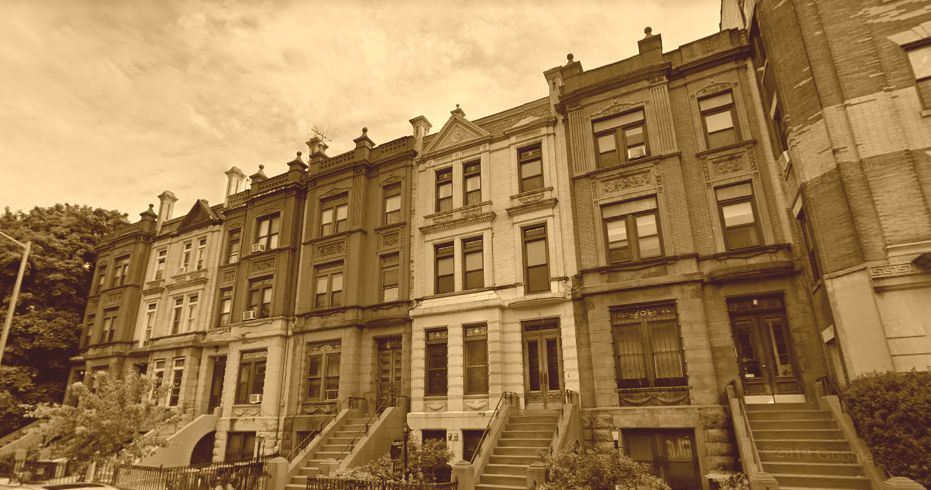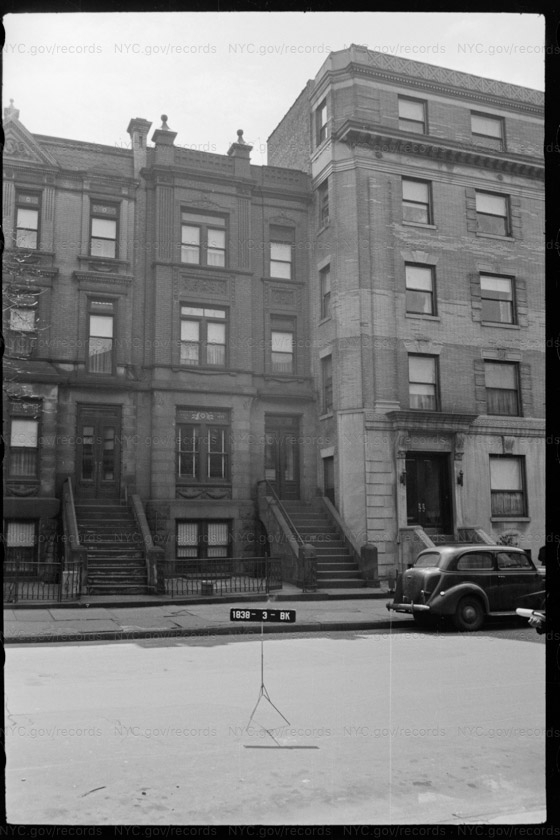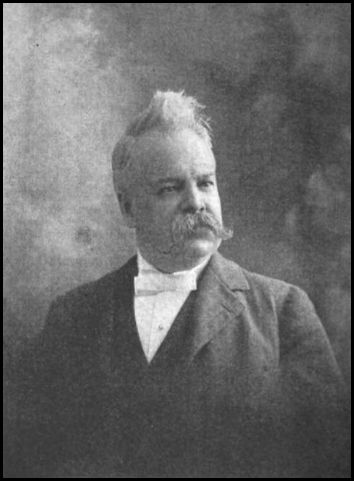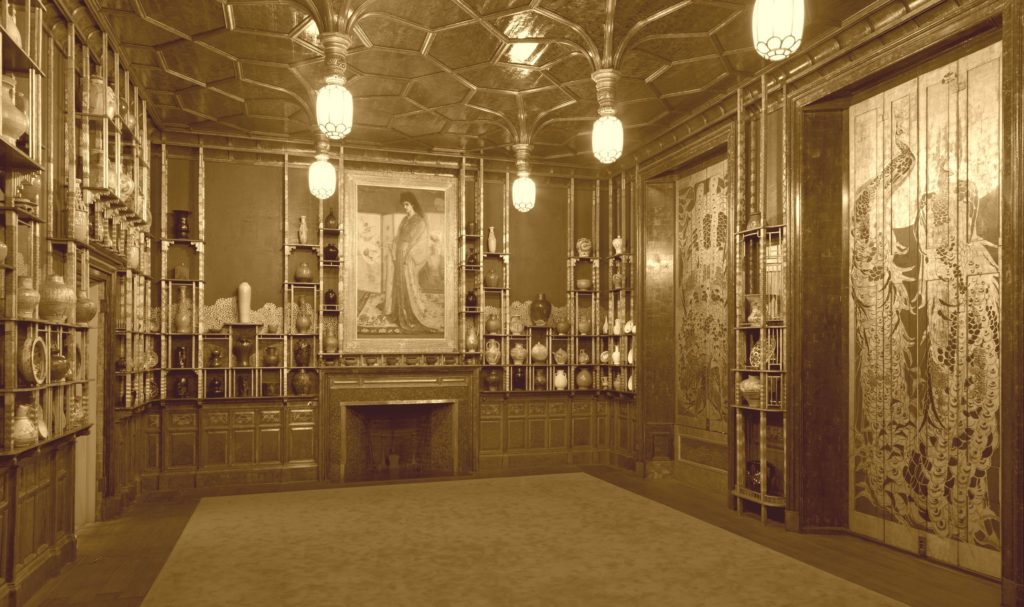THE JAPANESE GILT OF 150 HANCOCK ST (1887)

Brownstone Detectives investigates the history of our clients’ homes.
The story you are about to read was composed from research conducted in the course of one of those investigations.
Do you know the history of YOUR house?
********************************************************************************************************************************

Much of the design selections made by designers in the last part of the 19th century are comprised of a coterie of materials, patterns, and tools either no longer available today or much changed in their appearance.
Although most builders used simple materials that did not require the knowledge or training of a master designer, some of the more high-end brownstone constructors utilized the services of those who would tailor their interiors toward the more affluent members of society.
In the late 1880s, the Brooklyn Daily Eagle started a series of articles which described – in great length and detail – the interiors of individual newly-built or renovated houses. These houses were usually brownstones belonging to those affluent or upper-middle-class members of society.
Not only did such articles describing the interiors of neighbors’ homes sell newspapers, but the articles also served as advertising directed at those in the market for a townhouse to have a home of their own.
These advertisement-articles were placed, likely at the expense of the designers responsible for the “interior decorations” being described, as each piece ended with what readers wanted to know.
“Who did the work?”
THE WORK WAS DONE BY HALBERT

In 1886, a row of Queen Anne style 3-story and basement “brown stone houses” – on the north side of Hancock Street between Nostrand and Marcy avenues – had just been built by John G. Prague for George Phillips. They went up with facades in the “ABCCBA” configuration (an order of facades where the “ABC” houses mirrored the “CBA” houses).
Apparently, after the completion of construction, new owner, Peter Lynch, had his brownstone, No. 150 Hancock Street, the first house of the row, to have its interior decoration reworked in a high-valued design.
In the article that described this house – and others – the coloring, the wood types, use of friezes, mouldings, and tapestries was described in great detail, allowing a visitor to that address today to visualize how the interior looked.
A newspaper article describing the “remodeling,” exists as a sort of road map, giving an indication as to what the house looked like after the remodel, its layout, and what it contained. Ironically, such a story also helps the homeowners today to visualize how the property looked more than a century ago, and, although a bit over the top in terms of design, it can assist them in conducting a modern day renovation.
The paragraph started out, “A newly built brown stone residence of Peter Lynch, 150 Hancock street, near Nostrand avenue, has been beautifully finished.”
It then went on to lay out – likely in the words of “Halbert” – as the specification of colors, materials, and shades is highlighted – how each room was designed, changed, moreover, for the new owners who, it is to be assumed, had much better tastes.
(STARTING IN) THE PARLOR

“The parlor is done in a cream color, raised flock paper, the ceiling light cream color, papier mache wreaths, etc., with woodwork of mahogany.
“The dining room is done in Japanese gilt paper with a dark blue ceiling stipped, crescent design, and dado, four feet high, dark blue, stipped with gilt.
“The hall is done with a Boston ingrain paper with frieze stipped, one foot deep, with red at the bottom, forming a moulding.”
THE SECOND STORY
“The second story front is hung with terra cotta, cretonne tapestry, with ceiling done in old gold, the back room walls being painted in a light shade of blue, with a lighter shade for the frieze eighteen inches deep around the room, with figures stenciled.
“The bathroom (in French tiles) is papered in delicate shades of gray and blue.
“The work was done by Halbert.”
———————————————————————————————————————–
 Brownstone Detectives is an historic property research agency. Our mission is to document and save the histories of our clients’ homes. From our research, we produce our celebrated House History Books and House History Reports. Contact us today to begin discovering the history of your home.
Brownstone Detectives is an historic property research agency. Our mission is to document and save the histories of our clients’ homes. From our research, we produce our celebrated House History Books and House History Reports. Contact us today to begin discovering the history of your home.